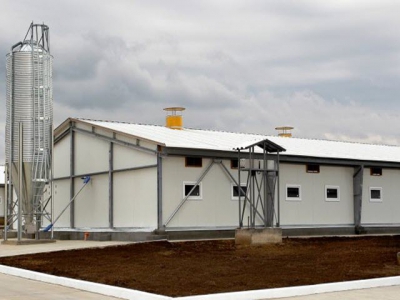Swine breeding stock trade low risk for foreign disease

SHIC-funded study examines biosecurity of international transport of swine breeding stock.
The Swine Health Information Center (SHIC) continues to fund investigations into possible pathways of foreign animal disease into the U.S., and a recently completed SHIC-funded study looked at international transportation biosecurity practices of four cooperating U.S. breeding stock companies, according to SHIC executive director Dr. Paul Sundberg.
In a post prepared for the American Association of Swine Veterinarians, Sundberg said one high-interest question related to international breeding stock transport was about the possibility of transport crates being reused after exposure in another country and returning something other than pigs back into the U.S.
In the study process, the researchers found that crates are not reused and are marked as "one-use" due to swine health biosecurity concerns, Sundberg said. Investigators also found that participating breeding stock companies have robust biosecurity procedures for both import/exports due to their investment in maintaining the health status of these pigs. Additionally, they discovered that exports/imports are frequent, but imports from outside North America occur less often. The complete research report can be found here.
Sundberg explained that this study had two primary objectives: The first was to determine the frequency of international breeding stock exports or imports and their country of destination and/or origin, while the second objective was to characterize the procedures currently implemented by breeding stock companies during the export or import processes.
Based on official U.S. Department of Agriculture records, between 2007 and 2018, a total of 839,152 pigs (e.g., gilts or boars) were imported into the U.S., the investigators found. Most of these pigs originated from Canada, while fewer than 3% were imported from Western Europe. On the other hand, breeding pig exports accounted for 382,118 pigs between 2007 and 2018, with Asia being the main destination (54.0%), followed by Mexico (31.3%) and South America (5.7%).
A total of eight breeding stock companies were invited to participate in this study, and half accepted the invitation and shared import/export protocols, Sundberg noted.
Participating breeding stock companies shared their procedures related to exports and/or imports as relevant to their business. Because these companies need to comply with USDA regulations, along with their interest in delivering high-health animals, processes were standard across companies, with minimal differences due to having strict biosecurity procedures, Sundberg said.
The results of this descriptive study clearly show that breeding stock imports/exports play an important role in the industry, and export procedures seem to represent a low risk, as potentially contaminated fomites related to these exports do not return to the U.S., Sundberg explained. Additionally, U.S. breeding stock companies maintain and follow appropriate biosecurity protocols.
Related news
 ASF set to undermine recovery in Vietnamese pig sector
ASF set to undermine recovery in Vietnamese pig sector The African swine fever (ASF) virus, initially detected in Vietnam in February, has resulted in the culling of over 1.3m domestic pigs in that market
 Weaning without zinc oxide
Weaning without zinc oxide The ban on the use of zinc oxide for weaned pigs in the EU comes into effect in June 2022, providing a challenge for EU pig production
 Warning about zinc oxide ban and antibiotic reduction targets in UK pig sector
Warning about zinc oxide ban and antibiotic reduction targets in UK pig sector The UK’s National Pig Association (NPA) has praised the drop in antibiotic use in the UK pig sector, as announced on May 30, but warned there would be challenge